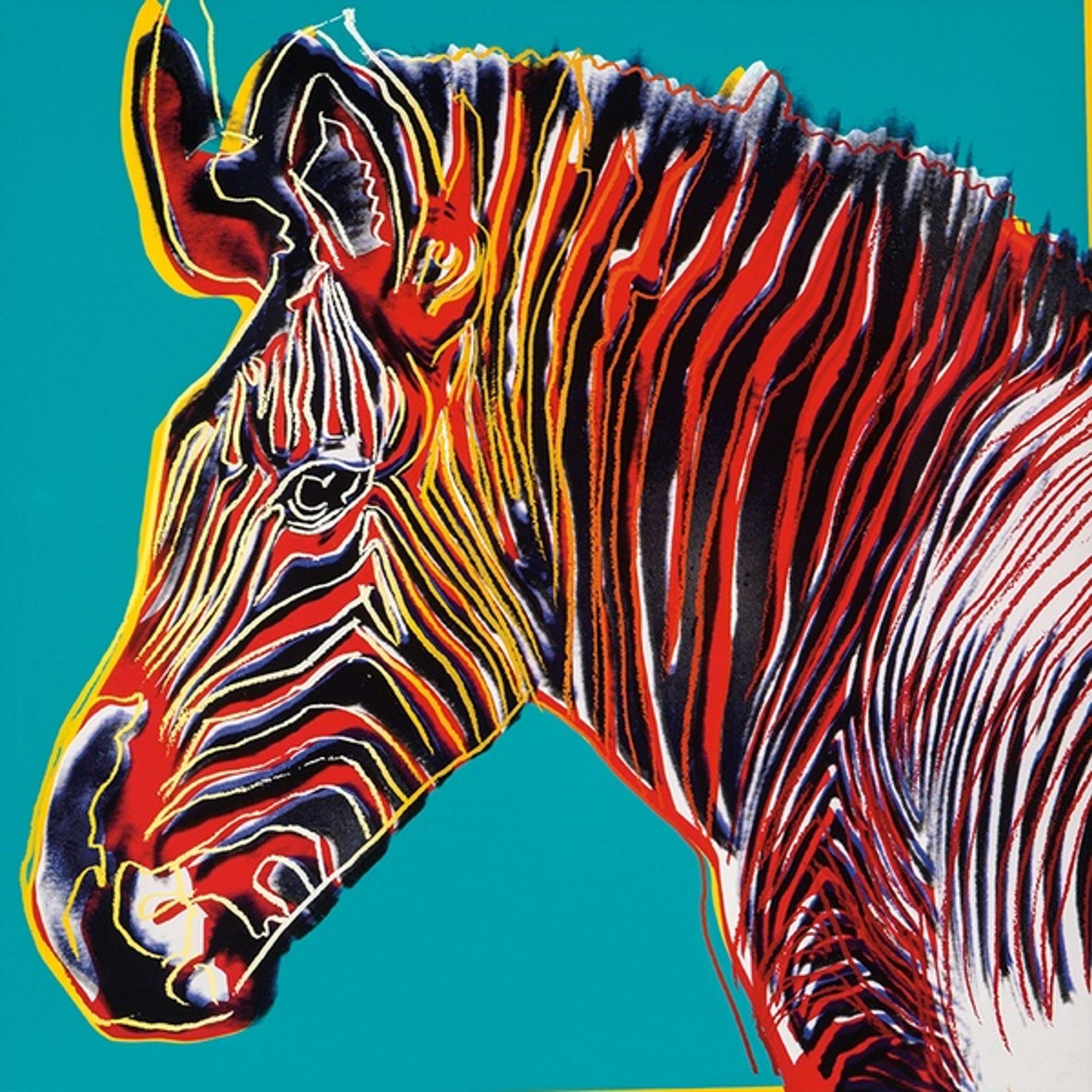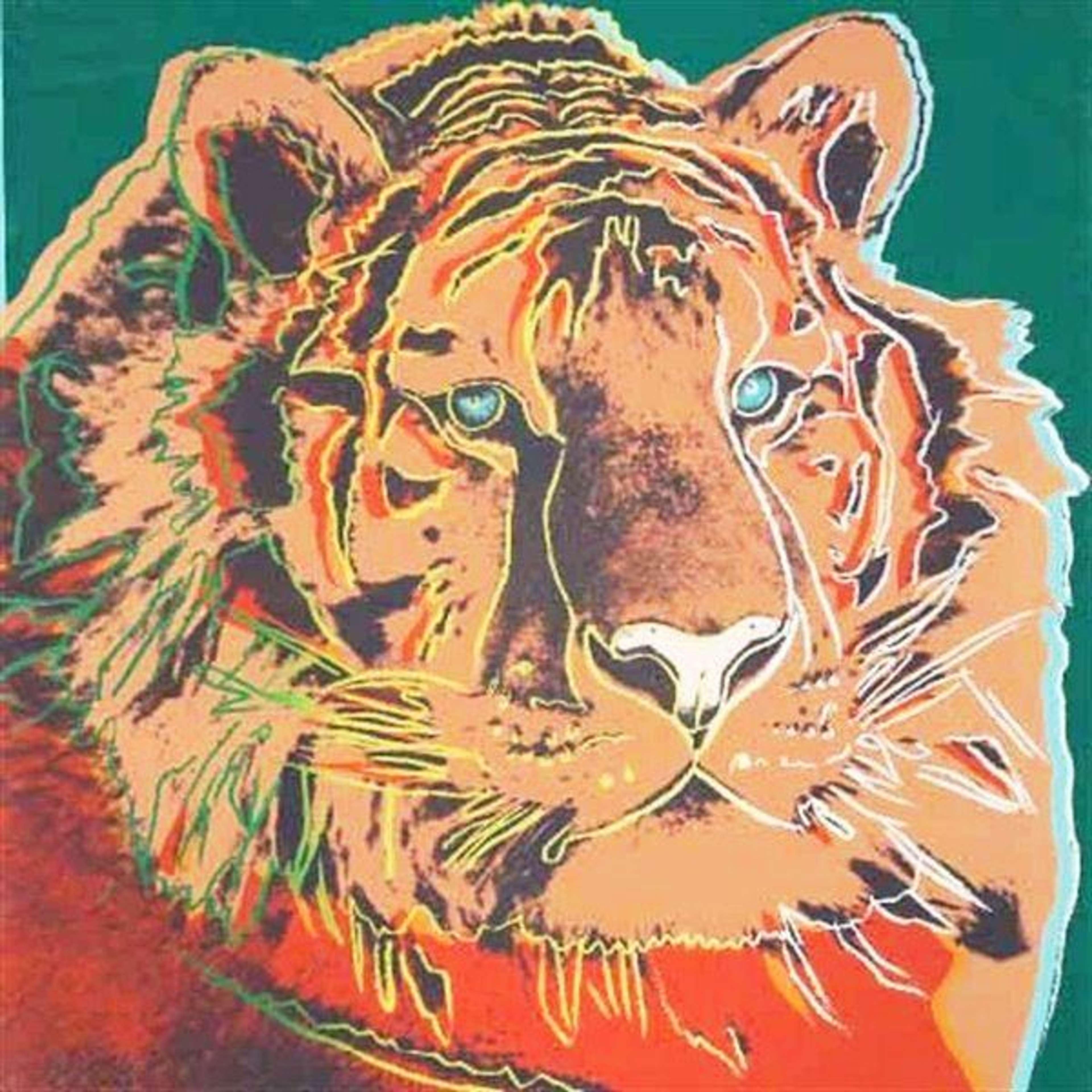10 Facts About Andy Warhol's Endangered Species

 Black Rhinoceros (F. & S. II.301) © Andy Warhol 1983
Black Rhinoceros (F. & S. II.301) © Andy Warhol 1983
Interested in buying or selling
Andy Warhol?

Andy Warhol
487 works
Andy Warhol was deeply committed to environmental conservation throughout his life, and frequently used his art to elevate the defenceless animal to so-called 'superstar' status. Endangered Species shines the bright Warhol spotlight on the species on the brink of extinction, and remains a relevant and poignant portfolio in our own times.
The primary subject of the series are the animals listed on the Endangered Species Act of 1973.
 Grevy’s Zebra (F. & S. II.300) © Andy Warhol 1983
Grevy’s Zebra (F. & S. II.300) © Andy Warhol 1983Warhol's Endangered Species series was executed 10 years after the Endangered Species Act (ESA) was signed into law. Under the presidency of Nixon, the 1973 Act listed the species threatened by extinction, and prioritised conservation for these particular species. Warhol represented the following animals from this list: African Elephant, Bighorn Ram, Black Rhinoceros, Siberian Tiger, Sea Turtle, San Francisco Silver Spot Butterfly, Pine Barrens Tree Frog, Bald Eagle, Orangutang, Grevy's Zebra, and Giant Panda.
The portfolio was commissioned by art dealers Ronald and Frayda Feldman.
 African Elephant (F. & S. II.293) © Andy Warhol 1983
African Elephant (F. & S. II.293) © Andy Warhol 1983Risk-taking New York gallerists and dealers Ronald and Frayda Feldman collaborated with Warhol throughout the 1980s. During this intensive period of partnership, they worked together on some of Warhol's most acclaimed series: Ten Portraits Of Jews Of The Twentieth Century, Myths, Ads, Moonwalk, and Endangered Species. The Feldmans were also well-known philanthropists, and Endangered Species was born out of a conversation with Warhol about their shared passion in environmental conservation.
The series is a rare instance in which Warhol gives animals his 'superstar' treatment.
 Siberian Tiger (F. & S. II.297) © Andy Warhol 1983
Siberian Tiger (F. & S. II.297) © Andy Warhol 1983With his archetypal method of screen printing, followed by retouching by hand, Warhol rendered each of these animals with the same attentiveness to detail as his human subjects. By focusing on their portraits alone, and representing them in such eye-catching colour, Warhol thus transformed these endangered animals into his so-called 'superstars'. In doing so, he shone a spotlight on these threatened species, showing them to be just as worthy of our attention as Marilyn Monroe or Liz Taylor.
Endangered Species led to a project with Kurt Benirschke titled Vanishing Animals.
 Butterfly From Vanishing Animals © Andy Warhol 1986 © Christie's
Butterfly From Vanishing Animals © Andy Warhol 1986 © Christie'sIn the same year of Endangered Species' creation, Warhol also worked on other animal-based projects to philanthropic end. With San Diego Zoo's pathologist, Kurt Benirschke, Warhol produced a series of prints for a book titled Vanishing Animals.
Warhol was environmentally conscious in his own life.
 San Francisco Silverspot Butterfly (F. & S. II 298) © Andy Warhol 1983
San Francisco Silverspot Butterfly (F. & S. II 298) © Andy Warhol 1983Throughout his life, Warhol strove to be environmentally conscious in his own life, as well as creating artworks to support environmental causes. As the Pop Artist once said: "I think having land and not ruining it is the most beautiful art that anybody could want to own." This was a legacy that continued after Warhol's death, not only in his art but also in the donation of Warhol's 15 acres of protected beachfront in Montauk to the Nature Conservancy in 1992
Warhol's Endangered Species paved the way for other artists to use Pop Art in the service of activism.
 Fertility 3 © Keith Haring 1983
Fertility 3 © Keith Haring 1983Given its indelible ties to popular culture, the media, and the everyday, Pop Art is inevitably political. Warhol paved the way for other artists to use their Pop Art in the service of socio-political activism, and these artists used their craft to promote varying causes. Jean-Michel Basquiat championed the Black celebrity and achievement, particularly in his Daros Suite series. Likewise, Keith Haring utilised his Pop to defend LGBTQ+ rights, and campaign for visibility and research during the AIDS epidemic of the 1980s.
Warhol rendered each endangered animal in brilliant colour to exaggerate the devastation of their possible extinction.
 Pine Barrens Tree Frog (F. & S. II.294) © Andy Warhol 1983
Pine Barrens Tree Frog (F. & S. II.294) © Andy Warhol 1983Each of the endangered animals in this series is rendered with vibrant and unnatural colour. Perhaps this was Warhol's attempt to draw immediate and unwavering attention to these species, and highlight exactly what the world would lose if these animals did indeed become extinct.
Warhol donated 100 copies of his Endangered Species portfolio to raise funds and awareness.
 Bald Eagle (F. & S. II.296) © Andy Warhol 1983
Bald Eagle (F. & S. II.296) © Andy Warhol 1983Endangered Species is a special instance in which so-called 'high-art' was used in the service of philanthropy. After his initial creation of the series with the Feldmans, Warhol donated 100 copies of the entire portfolio to raise funds and awareness. Since the creation of the series, the Bald Eagle and the Pine Barrens Frog have been taken off the Endangered Species list. While this cannot be owed to Warhol, the awareness raised by the series and Warhol's financial sponsorship might have helped to facilitate this.
Endangered Species wasn't Warhol's only foray into animal portraiture.
 Cow (F. & S. II.11A) © Andy Warhol 1971
Cow (F. & S. II.11A) © Andy Warhol 1971Throughout his life, Warhol was particularly fond of animals, and dedicated several print series to his favourite mammals. His Cats Named Sam series recalled the cats of Warhol's childhood, and his Cow series focused on the 'pastoral' appeal of the farm animal.
The Endangered Species portfolio is still extremely relevant today.
 Black Rhinoceros (F. & S. II.301) © Andy Warhol 1983
Black Rhinoceros (F. & S. II.301) © Andy Warhol 1983In recent years, environmental consciousness has become more important than ever before. The climate crisis is becoming a more and more pressing issue in our times, and activist groups urge us to make changes to our lives to curb the catastrophe. The art world has a salient part to play in this endeavour, since it is a world of decadence and over-consumption. Artworks like Warhol's Endangered Species series, however, remind us that art can propel this vital cause and illicit powerful change in our habits and our minds.